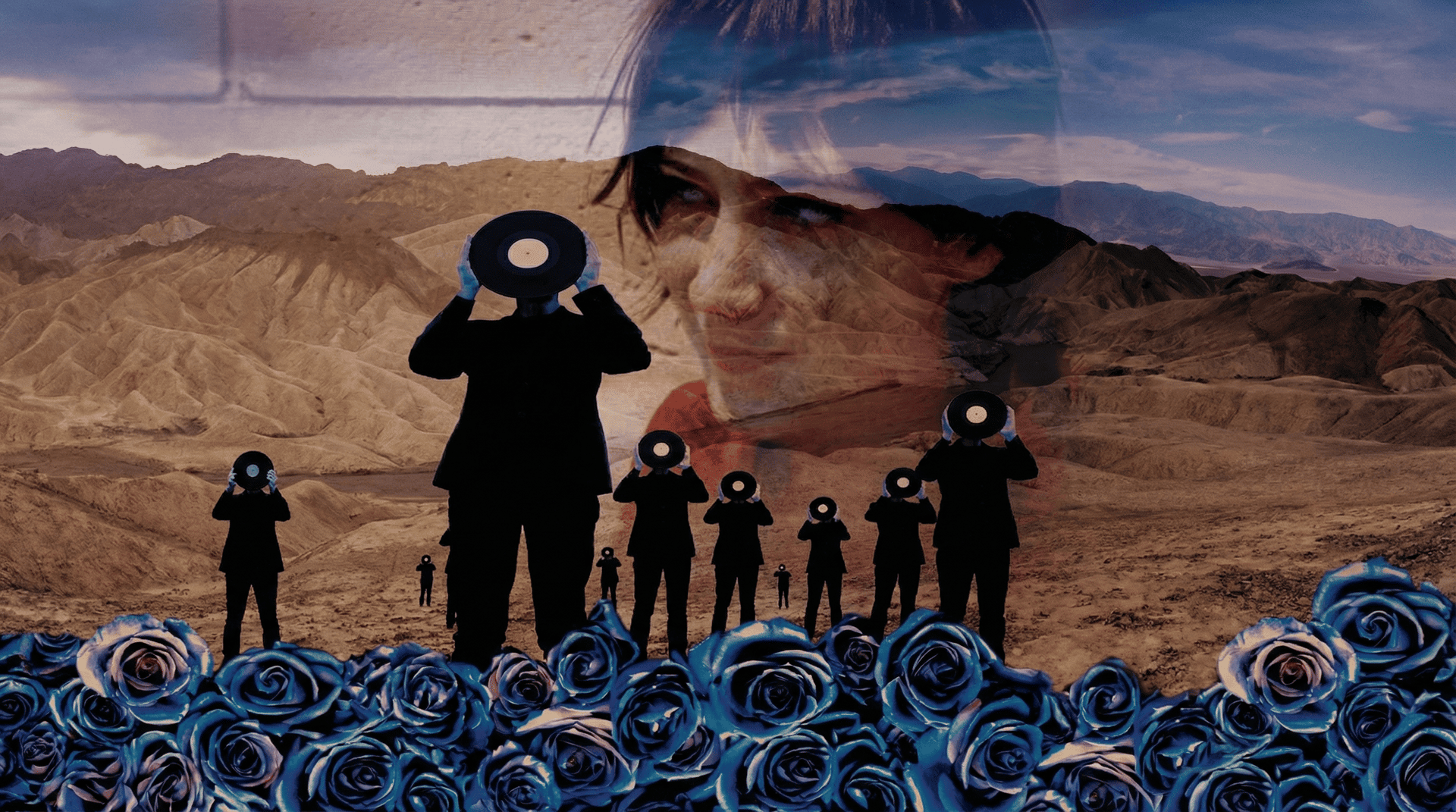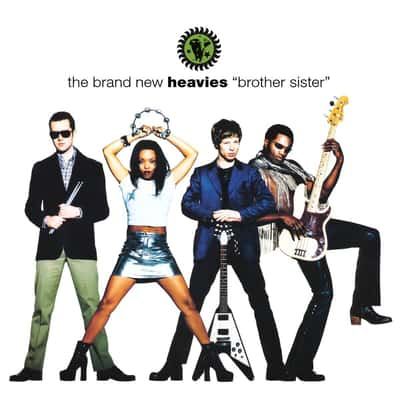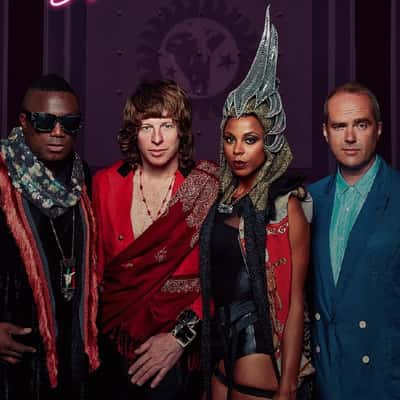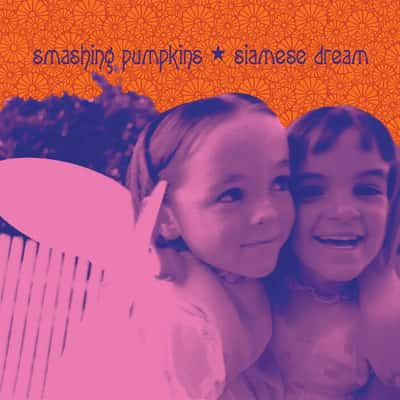
This Weeks Top Music: U2, Smashing Pumpkins & More
🎶 Rediscovering The Groove: Brother Sister by The Brand New Heavies 🎶
🎉 Celebrating 30 Years of Musical Bliss
In 1994, an album emerged that seamlessly blended acid jazz with deep funk grooves, marking a significant milestone in the genre’s evolution. “Brother Sister,” crafted by the dynamic British ensemble The Brand New Heavies, not only elevated the band’s status but also became a defining moment in the ’90s music scene. Fast forward to today, the album celebrates its 30th anniversary with a spectacular reissue that brings nostalgia and fresh sounds to both old fans and new listeners.
🌟 The Band and Their Journey
The Brand New Heavies, pioneers of the acid jazz movement, have always been known for their ability to fuse elements of jazz, funk, soul, and R&B. With “Brother Sister,” they reached new heights of musical craftsmanship. The album features N’Dea Davenport, whose soulful and charismatic vocals breathe life into each track, making it one of the band’s most memorable works.
🎵 Hits and Hidden Gems
“Brother Sister” is packed with tracks that hit the charts and made significant waves in the music community. Songs like “Dream On Dreamer” and “Midnight at the Oasis” not only dominated the airwaves, earning top 20 spots but also showcased the band’s versatility and Davenport’s vocal prowess. The album didn’t just stop at producing hits; it also offered deeper cuts like “Back to Love” and “Spend Some Time” which have endured as fan favorites due to their catchy rhythms and heartfelt lyrics.
📀 The Anniversary Edition
The 30th-anniversary reissue of “Brother Sister” is not merely a celebration but a restoration of a classic. This expanded edition includes not only the original tracks remastered for unparalleled clarity and depth but also features unreleased cuts, remixes, and rarities that provide a deeper insight into the creative process of The Brand New Heavies during this era. Among these treasures, fans can find tracks previously available only on the US and Canadian versions of the album, and B-sides like those from “Back to Love.”
🌐 Impact and Legacy
Upon its release, “Brother Sister” quickly climbed to No. 4 in the UK charts, solidifying its place as a pivotal album in the rise of acid jazz. The Brand New Heavies’ influence can be seen in how they inspired a generation of musicians and helped to popularize a genre that has remained influential in various forms of music today. The album’s blend of upbeat grooves and smooth, soulful melodies created a blueprint that many artists have drawn from over the years.
🎤 N’Dea Davenport - The Voice That Captivated Millions
N’Dea Davenport, whose tenure with The Brand New Heavies was marked by this album, brought an unmatched level of soul and energy to the project. Her ability to convey deep emotion while effortlessly moving with the grooves contributed immensely to the album’s success. The reissue serves as a reminder of her significant role in shaping the band’s sound during her original run.
🎉 Conclusion: A Timeless Classic Revisited
As we revisit “Brother Sister” on its 30th anniversary, it’s clear that the album has lost none of its original charm and continues to resonate with audiences around the world. Whether you’re a long-time fan or a newcomer to The Brand New Heavies, this reissue offers something for everyone—a chance to relive the magic or discover it afresh.
Join in the celebration of this landmark album and immerse yourself in the grooves that defined an era. “Brother Sister” remains a testament to the timeless allure of great music and the enduring legacy of The Brand New Heavies. 🎉🎶
- View The Brand New Heavies on russ.fm
Beth Orton’s “Central Reservation”: A Deep Dive into Folktronica 🎶
Introduction to Beth Orton and Her Musical Journey 🌟
Beth Orton, a distinctive voice in the sphere of folk-infused electronic music, made an indelible mark with her second studio album, “Central Reservation”. Released in 1999, this album not only solidified her reputation as a talented singer-songwriter but also showcased her ability to blend acoustic elements with electronic undertones, a style often referred to as “folktronica”.
The Genesis of “Central Reservation” 🌱
Following the success of her debut album “Trailer Park” in 1997, Orton ventured further into the realm of folktronica with “Central Reservation”. This album emerges as a more introspective work, where Orton delves deeply into personal themes of love, loss, and healing. It’s a reflection of her lyrical prowess and her unique approach to songwriting, where she marries the organic with the electronic, creating a sound that’s both ethereal and grounded.
Album Highlights and Key Tracks 🔍
“Central Reservation” features a collection of tracks that highlight Orton’s tender vocals and introspective lyrics. The title track, “Central Reservation”, stands out as a contemplative piece, exploring themes of personal crossroads and change. Another notable track, “Stolen Car”, combines catchy melodies with haunting lyrics, making it a favorite among fans and critics alike.
Production and Collaborative Efforts 🎚️
The production of “Central Reservation” saw Orton collaborating with notable figures in the music industry, including producers like Ben Watt (of Everything But The Girl fame) and Victor Van Vugt. The album’s sonic landscape is a testament to Orton’s vision of blending acoustic folk elements with subtle electronic influences, creating a sound that’s both innovative and timeless.
Critical Reception and Impact 📜
“Central Reservation” was met with critical acclaim upon its release. It earned Orton a nomination for the prestigious Mercury Prize and helped her secure a Brit Award for Best British Female Artist. The album has been praised for its emotional depth and innovative sound, cementing Orton’s place in the annals of modern folk music.
Legacy and Influence 🌍
Over the years, “Central Reservation” has grown in stature, influencing a generation of artists who seek to blend different musical traditions. It remains a pivotal work in Orton’s discography and in the broader context of late 90s British music, where boundaries were continuously being pushed.
Conclusion: A Lasting Resonance 🌈
Beth Orton’s “Central Reservation” is more than just an album; it’s a journey through the complexities of the human spirit, set against a backdrop of innovative musical arrangements. Its enduring appeal lies in its ability to resonate on a deeply personal level, making it a timeless piece in the world of folktronica.
In revisiting “Central Reservation”, we are reminded of Beth Orton’s unique ability to navigate the escalator of life in her distinctive way—always exploring, always evolving. Her music remains a central reservation in the hearts of those who appreciate the beautiful confluence of folk and electronica. 🎧🍃
This exploration of “Central Reservation” sheds light on its significance in Beth Orton’s career and its impact on the landscape of British music. As we look back, the album stands as a testament to Orton’s artistry and her profound influence on the genre-blending music trends that would follow.
🎸 “Attack Of The Grey Lantern”: A Collector’s Dream by Mansun 🌟
Hello music lovers! This week, we’re diving deep into the fabulous world of Mansun’s “Attack Of The Grey Lantern (Collector’s Edition).” This album isn’t just a piece of music; it’s a monumental artifact in the Britpop landscape, capturing the essence of a band that dared to differ from the typical ’90s Britpop formula. 🎶
🚀 The Genesis of a Cult Classic
Released back in February 1997, “Attack of the Grey Lantern” quickly climbed to the top of the UK Albums Chart. Mansun, led by the enigmatic Paul Draper, crafted an album that was both grandiose and introspective. With its blend of art rock and progressive elements, Mansun set themselves apart with a thematic depth that few of their contemporaries dared to explore.
🌐 The Collector’s Edition: What’s Inside?
Fast forward to the latest release, the Collector’s Edition, which is truly a treasure trove for any Mansun aficionado. This edition isn’t just about nostalgia; it’s an immersive experience. Here’s what makes it stand out:
High-Quality Audio Formats: The remastering in 21st Anniversary Edition brings out the sonic brilliance of the original recordings. Available in 16-bit FLAC, the clarity and depth of the audio are impeccable, ensuring that each note and lyric delivers its full emotional impact.
Extra Tracks and Sessions: Dive deeper into the Mansun magic with additional tracks that didn’t make the original cut. These gems provide a peek into the creative process of the band. Highlights include “Mansun’s Only Love Song” and sessions from the BBC that showcase the band’s raw, live energy.
Deluxe Packaging: The edition comes in a hard-back book sleeve which adds a tactile sense of ownership and nostalgia for collectors and fans alike.
🎭 Themes and Artistic Vision
Mansun was never a band to shy away from complex themes. “Attack of the Grey Lantern” is conceptual at its core, dealing with themes of identity, societal roles, and the human psyche. This narrative style, wrapped in lush orchestration and daring guitar riffs, creates a listening experience that’s both intellectually stimulating and emotionally resonant.
🌟 Why It Matters Today
In an era where digital streaming dominates, the physicality of a collector’s edition like this serves as a reminder of the album’s physical and thematic substance. It’s a nod to the fans who crave more than just digital files—a full, sensory experience that allows a deeper connection with the music and its creators.
📣 Final Thoughts
“Attack of the Grey Lantern (Collector’s Edition)” by Mansun isn’t just another album reissue. It’s a comprehensive homage to a band that dared to dream differently, to craft songs that were narratives, and to embrace excess with a purpose. Whether you’re a longtime fan or a newcomer to Mansun’s world, this edition is a gateway to understanding the profound impact of one of the ’90s most intriguing bands.
So, turn up the volume, and let Mansun take you on a journey back to a time when music was as much about storytelling as it was about sound. Enjoy the ride! 🎧🚀
This deep dive into Mansun’s “Attack of the Grey Lantern” highlights not just the music but the cultural impact and continued relevance of a band that reshaped the boundaries of its genre.
- View Mansun on russ.fm
🎶 The Pineapple Thief - “Give it Back” - A Journey Through Sound and Emotion 🎸
The Pineapple Thief, a band renowned for its profound impact on the progressive rock scene, has once again captivated the hearts of music enthusiasts with their latest offering, “Give it Back.” This album marks an evolutionary step for the band, showcasing a matured sound that intertwines complexity with captivating melodies.
🥁 Band Dynamics and Evolution
“Give it Back” is not just an album; it’s a testament to the band’s evolution into a more cohesive and “proper” group. The collaborative spirit shines brightly, as each member brings their unique flair to the table, creating a harmonious and dynamic soundscape. According to bassist Jon Sykes, the band now feels more integrated than ever, a factor that is vividly apparent in the album’s delivery.
🎼 Key Tracks and Themes
The album rocks with vigor, particularly evident in tracks like “Put It Right” and “Rubicon.” These songs demonstrate the band’s ability to blend intense dynamics with dramatic narratives. Bruce Soord, the frontman, continues to excel in pulling at the listener’s heartstrings, especially in tracks like “Now It’s Yours” and “To Forget,” where the emotional depth is palpable, providing a gentle respite amid the stormy musical passages.
📀 Creative Cohesion and Highlights
It’s been several years since Gavin Harrison, renowned for his percussion excellence, joined the band. His influence is profound, bringing a new level of creative cohesion that was first notably recognized in their acclaimed album “Your Wilderness.” “Give it Back” builds on this foundation, with the band reaching new heights of artistic expression.
🌟 Conclusion and Anticipation
As we delve into “Give it Back,” it’s clear that The Pineapple Thief is not just making music; they are crafting experiences. The album is a rich tapestry of emotional and sonic exploration, reflecting the band’s journey and the individual growth of its members. The anticipation for this album was high, and it undoubtedly delivers, solidifying The Pineapple Thief’s standing in the music world.
For fans old and new, “Give it Back” is a compelling listen, offering a blend of thought-provoking lyrics and intricate musical arrangements that demand attention. It is a musical journey worth taking, filled with moments that will resonate and linger long after the last note fades.
In conclusion, “Give it Back” by The Pineapple Thief is not just an album to be heard but to be experienced. It is a profound statement in the landscape of progressive rock, showcasing the band’s relentless pursuit of musical excellence and emotional depth. As we look forward to what the future holds for this remarkable ensemble, one thing is certain: The Pineapple Thief continues to innovate, inspire, and invigorate the world of music. 🎵🌍
Explore this sonic journey and let “Give it Back” lead you through a realm of musical brilliance and heartfelt expression.
🎸 ‘The Joshua Tree’ by U2: A Musical Milestone 🌟
Introduction
In the realm of rock music, few albums have captured the essence of an era as poignantly as U2’s iconic ‘The Joshua Tree’. Released in 1987, this album not only skyrocketed U2 into international stardom but also deeply resonated with millions around the globe, becoming a defining sound of the late 80s.
The Genesis of an Icon
‘The Joshua Tree’ was born out of a period of intense creativity for U2. The band members, Bono (vocals), The Edge (guitar), Adam Clayton (bass guitar), and Larry Mullen Jr. (drums), were inspired by their experiences and the socio-political landscapes they encountered on their tours, particularly in America. The album reflects themes of disillusionment and spiritual longing, wrapped in a sound that mixes rock with deeper explorations into folk and blues.
Track Breakdown and Musical Landscape
The opening track, “Where the Streets Have No Name,” sets an anthemic tone, characterized by The Edge’s echoing guitar riffs and Bono’s impassioned vocals. It’s followed by “I Still Haven’t Found What I’m Looking For” and “With or Without You,” both of which reached the top of the American charts and are exemplary of the band’s mix of emotional depth and musical innovation.
The album continues to weave between introspection and a critique of the external world, with songs like “Bullet the Blue Sky” reflecting Bono’s reactions to the violence in Central America, and “Running to Stand Still,” which delves into the despair of heroin addiction.
Critical Reception and Legacy
Upon its release, ‘The Joshua Tree’ received widespread acclaim, topping the charts in over 20 countries. It became the fastest-selling album in British chart history at the time and marked U2’s first number one album in the U.S. Critics praised it for its ambitious scope and the way it seamlessly blended different musical styles.
The album not only earned U2 their first two Grammy Awards but has since been featured in numerous “greatest albums” lists, cementing its place in music history. The influence of ‘The Joshua Tree’ is pervasive and enduring, evident in the way new generations of musicians cite it as a major influence.
The Band’s Perspective
For U2, ‘The Joshua Tree’ was a bold step in their artistic journey. Bono once remarked in 1987 about the pressure and anticipation surrounding its release, highlighting the band’s desire to challenge both themselves and their audience. This desire paid off spectacularly, as the album played a huge part in defining U2’s career and the landscape of rock music.
Conclusion: A Lasting Impression
More than just an album, ‘The Joshua Tree’ is a profound narrative and a mirror to the cultural, political, and personal climates of its time. Its legacy is not just in its chart-topping hits but in its ability to connect with listeners on a deeply personal level, making it a timeless piece in the annals of rock music.
‘The Joshua Tree’ by U2 remains not only a high point in the band’s career but also a beacon for what rock music can achieve in terms of storytelling and emotional impact. A true masterpiece, it continues to inspire and resonate, proving that good music indeed knows no boundaries. 🎶✨
🎸 Siamese Dream by The Smashing Pumpkins: A Sonic Tapestry of Dreams and Despair 🌌
Introduction
Released in July 1993, “Siamese Dream” stands as the second studio album by the American alternative rock band The Smashing Pumpkins. Crafted during a tumultuous period marked by personal strife and band tension, the album emerged as a beacon of innovation in the rock genre. Its lush soundscapes, combined with raw emotional depth, cemented it as a quintessential record of the 90s alternative scene.
The Making of a Masterpiece
“Siamese Dream” was produced by Butch Vig, who was also behind Nirvana’s “Nevermind”. Under his guidance, the album took a denser and more layered approach than its predecessor. Recording sessions were fraught with challenges, including band disputes and frontman Billy Corgan’s struggles with depression. Despite—or perhaps because of—these struggles, the album’s production achieved a perfect blend of shoegaze’s swirling textures and grunge’s raw power, creating a distinctive sound that was both expansive and intimately confessional.
Standout Tracks
🎶 “Cherub Rock”, the opening track, serves as a defiant anthem against the music industry’s machinations, driven by a distinctive guitar riff and a swirling psychedelic solo. 🎶 “Today” is famously ironic, juxtaposing upbeat melodies with lyrics about despair, making it one of the band’s most memorable tracks. 🎶 “Disarm” reveals Corgan’s fraught childhood experiences, backed by a string ensemble that intensifies the emotional heft of the song.
Artistic Influences and Stylistic Flourishes
The album is heavily influenced by the shoegaze genre, characterized by its ethereal sound mix of vocals and guitars. This influence is married with elements of psychedelic rock, heavy metal, and dream pop, creating a unique sound that resonates with a broad spectrum of music lovers. The use of varied instruments, including Mellotron and strings, adds to the album’s rich orchestral texture.
Cultural Impact and Legacy
Upon its release, “Siamese Dream” received critical acclaim for its ambitious sound and emotional depth. It was a commercial success, certified multi-platinum, helping to cement The Smashing Pumpkins as a major force in the alternative rock movement. The album’s exploration of themes such as pain, alienation, and redemption resonated deeply with fans, particularly among the youth of the 90s, and continues to find relevance with new generations.
The iconic album cover, featuring two angelic girls against a starry backdrop, has become one of the most recognizable images in rock music. It complements the dreamlike quality of the music and serves as a visual representation of the themes of innocence and loss that pervade the album.
Conclusion
“Siamese Dream” by The Smashing Pumpkins not only defined the sound of the early 90s but also showcased the power of music to transcend personal turmoil. With its rich, layered sounds and heartfelt lyrics, the album offers a sonic journey through the landscapes of hope, despair, and ultimately, healing. It remains a pivotal work that continues to inspire artists and music fans alike, a testament to its enduring impact on the landscape of alternative rock.
As we look back on this monumental album, its dreamy aura and emotional resonance continue to captivate and comfort those who wander through its sonic realms. “Siamese Dream” is truly a testament to the enduring power of music to capture and express our deepest emotions.
Top Artists (Week 40)
- The Brand New Heavies (18 plays)
- Beth Orton (12 plays)
- Mansun (11 plays)
- The Pineapple Thief (10 plays)
- U2 (6 plays)
- The Smashing Pumpkins (4 plays)
Top Albums (Week 40)
- Brother Sister by The Brand New Heavies
- Central Reservation by Beth Orton
- Attack Of The Grey Lantern (Collector’s Edition) by Mansun
- Give it Back by The Pineapple Thief
- The Joshua Tree by U2
- Siamese Dream by The Smashing Pumpkins







